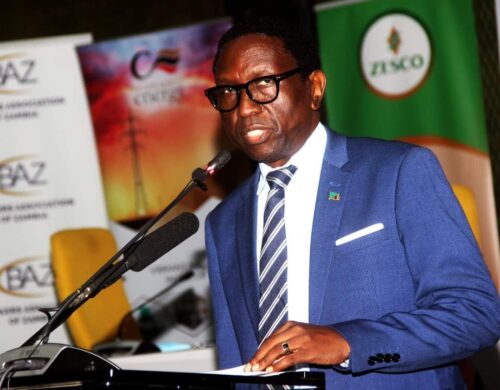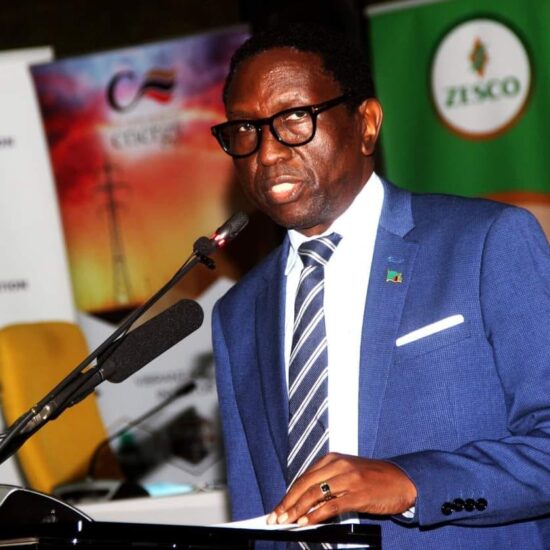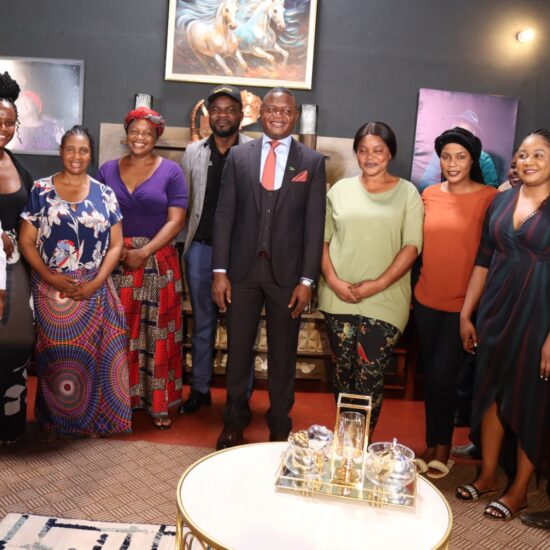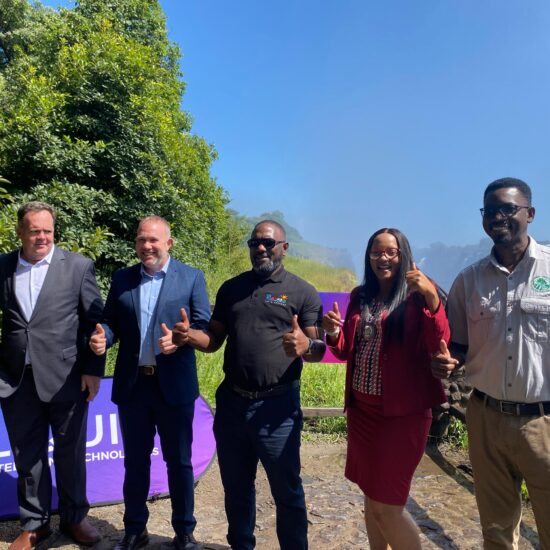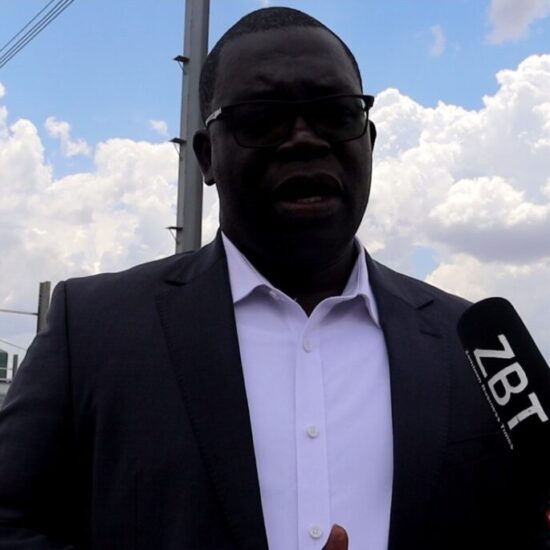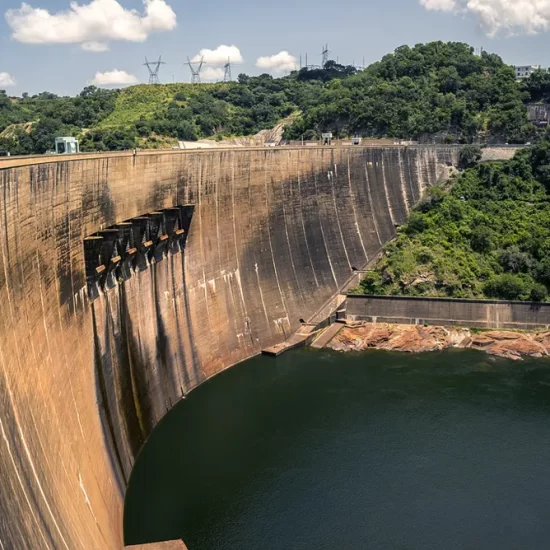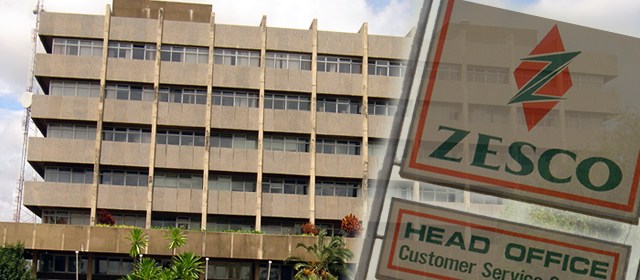
By Eng. Geoffrey Chishimba Chiyumbe.
The UPND’s New Dawn Government under President Hakainde Hichilema was ushered into power after the August 2021 general elections under a campaign promise of turning our nation around into “A United, Prosperous and Better Zambia for All”. Reforms in the energy sector were promised with ZESCO Limited, the leading player in the electricity sub sector, being a major target.
Providing reliable power not only requires generation of the energy you need, but careful planning to ensure the appropriate generating capacity is available and that a well-maintained transmission, distribution and supply system is ready to deliver the maximum possible demand and energy at any given moment.
Each step in the process to deliver power comes at a cost ( capital, operation and maintenance), and so power utilities carefully structure fair and equitable rates and fees that recover the costs that ensure a reliable grid can deliver the needed energy to the end user. The monthly electric bill covers not only the cost to generate the energy we use, but also supports the cost ( operational and maintenance) of the distribution and transmission grid that delivers that energy, the capacity to provide power when needed, and the monthly fixed costs to provide metering and member services.
The Connection fee, as the term implies, is the client`s capital contribution toward the procurement and installation or connection of the assets to the grid to deliver the power at the client’s premises, and excludes the subsequent operational and maintenance costs associated with that asset in the provision of power, which is covered in the monthly bill.
ZESCO Limited has just submitted an application to the Energy Regulation Board (ERB) to seek approval to revise upwards connection fees for Standard Connections. In its application, ZESCO Limited states that it has had challenges to promptly connect new applications for electricity resulting in a backlog in new connections of 67,000 as at 31st December 2021.
According to ZESCO, the backlog in new connections was attributable to the lack of cost reflective connection fees for Standard Connections, which according to ZESCO are up to ten times below the actual cost of connection in some cases. As a result, the Corporation was unable to meet the cost of procuring materials and associated services required for new connections to be undertaken from the fees collected.
Consequently, ZESCO has had to resort to external financing to undertake customer connections, which was unsustainable. According to ZESCO, this was what necessitated their application to the ERB to revise connection fees in a bid to have in place cost reflective connection fees premised on the “PAY WHAT IT COSTS TO HAVE IT” principle.
Further, ZESCO states that connection fees were last reviewed in 2005. For the new ZESCO management, these figures are cost reflective, an ingredient needed to run that institution as a viable commercial power utility.
ERB on the other hand has the legal mandate to “determine, regulate and review charges and tariffs in the energy sector” in Zambia, defined in as “prices, fees, deposits, connection charges or fees, etc. And so ERB is responsible for the approval of connection charges levied by ZESCO on its customers.
A standard connection is one where all relevant infrastructure such as lines and poles are available in the area where a customer seeks connection. Therefore, all that is needed is just a service cable (drop line) from the power lines into a customer’s house. On the other hand, non-standard connections are those where there is need to put up infrastructure such as lines and poles to connect new customers to power.
The UPND manifesto talks about cost reflective tariffs in the energy sector and yes, in compliance. ZESCO is saying these new fees are cost reflective. How will ERB know that indeed they are and not an exaggeration? Did ZESCO submit the Bills of Quantities (BOQs) for each tariff item to justify cost reflectivity statement?
ERB must have the spreadsheets showing the material costs including labor and transport cost percentages for each item or tariff category upon which the new fees for the standard connections were based. Otherwise in the absence of that, ERB has to carry out this process themselves, methodically and meticulously so! How then do we as patriotic Zambians in general and as ZESCO clients in particular support this application? It is only upon considering the new figures to be reasonable and justifiable and an informed conviction that they are truly cost reflective.
The issue of a cost reflective tariff is already filtered in, the raging debate now is on how, once approved, it will be implemented as an aspect of client affordability. Can Zambians trust the new dawn appointed ZESCO management team , considering the history with previous Zesco administrations that were tainted with allegations of rampant corruption, political interference, abuse and gross financial mismanagement?
Let us then zoom in and consider one category in the new application table and analyze it. For instance, an application for a new residential connection to a servant’s quarter, where a 3 phase 4 wire overhead line already exists, and requires only a service cable and a meter. Zesco has based the proposed costs on the current historical cost of materials and estimates of transport and labour and so, premised the attendant costs on the following elements:
1) Cost of materials (service cables and energy meters);
2) Labour; and
3) Transport.
The fee for a servant’s quarter is now increasing from K 769 to K 4,700. ERB must confirm from the spreadsheets this figure and focus on what percentages Zesco applied on transport and labor. This is a noble service expected to be rendered by ERB to Zambia, under the new dawn administration, before making an approval.
One of the key and fundamental cost drivers at ZESCO, based on the thorough diagnosis of the challenges that make ZESCO inefficient, not commercially viable and technically insolvent, conducted in 2017 by the PRESIDENTIAL TASK FORCE ON ZESCO PERFORMANCE, is the bloated staff or workforce.
This negative element could be built into the labor component calculation and likely to push the figure up as a consequence. In this case study, if the total installation cost is coming to around K 4, 700 then it is justifiable as being reasonable and indeed truly cost reflective. This translates to about 512% upward adjustment or percentage increase.
But then, this sudden jump is too exorbitant even if it is justifying that the ZESCO of yesteryears was sleeping and the today ZESCO under the new dawn government has just woken up from that deep slumber. The Energy Minister, Honorable Kapala, during the ZNBC Sunday interview reiterated the fact that ZESCO was not established originally to operate as a full-fledged profit making business entity but as a State Owned Enterprise (SOE) to provide a service to Zambia at a reasonable and affordable fee, which fact we all know. This indeed is the ZESCO we are used to as Zambians.
Sadly, with these new revised fees on the table, many Zambians will see a new ZESCO with a new business model to run it as an aggressive business, on a private sector concept, with no social face. In addition, this can also be interpreted and misconstrued as the new Zesco taking undue advantage of its monopolistic position in the Zambian electricity sector market to abuse innocent Zambians, by over charging them, to pay off for its sins or misdeeds of the past, probably!
What needs to happen at ZESCO is a complete transformation to run it as a commercially viable entity but flavored with a social character. This means segmenting it’s operating model or tariffs structure ( dual character) to identify its clients that are solely business in character and those that need to be treated as its social responsibility – domestic clients and probably small businesses like barber shops and hair salons.
Not to be ignored and key to this ZESCO application is the Cost of Service Study (CSS) that ERB undertook, which report the Energy Minister informed the nation that it is out and currently undergoing peer review. The CSS findings will have an impact on the tariffs that these new applicants will be subjected to as they become new clients.
Remember, what is under consideration here now is just the once off connection fee, which is analogous to buying a mobile phone handset and a SIM card. Acquiring these assets mean nothing without talk time. We are yet to get new tariff rates soon and we anticipate them with a lot of anxiety.
The underlying issue is that UPND has inherited a ZESCO that is broke, loss making with a high debt to equity ratio. Unfortunately, it has been in that sorry state for years now due mainly to mismanagement and abuse.
Now the new dawn government is trying to resuscitate it, and how does it revive it with rates that are not cost reflective? Is it by suddenly increasing the fees, seen by many as “over charging” customers through a sudden once off payment call? Can it be achieved through some well thought out mechanism that will present a win – win situation to both Zesco and its clients?
The turnaround strategy must include broadening the customer base. But then in the midst of these pending but imminent high once off connection fees, how will that be possible? Even though the UPND manifesto talks about attaining cost reflectivity, does it practically now entail that we achieve that at once, cut throat way through a once- off exorbitant increase ( which will injure our people, Zesco and the economy) or we employ timeframe – staggering approach by making reasonable time – dependent increments to arrive at the desired tariff? What is the implementation strategy?
We hope that all customers that already applied for new connections and already made payments into ZESCO towards those services and are part of the 67,000 backlog, will not be made to pay and top up the difference, thereby subjecting them into new approved fees. That would be a bleach of contract by ZESCO, would it? We wait and see.
While considering this matter, can we meander a bit and look at some interesting calculation, peering into the activities at the old ZESCO, and derive some lessons learnt. Going by the Energy Minister’s figure given to parliament of new connection backlog of 60,000 and using the prevailing lowest connection fee for the standard connections of K 769 already paid into ZESCO coffers.
This translates to a minimum K46 million that ZESCO received from customers and never gave them a service they paid for. How did ZESCO use this money? The ZESCO of yesteryears! Is this money still sitting somewhere in some ZESCO account or ZESCO of yesteryear already dipped its fingers into it? It is a bad business practice and actually bad manners to chew customer money before delivering a service for which it was paid.
This is a vivid demonstration of the deliberate absence of prudent financial management principles and practices at the yesteryear Zesco, or, is it not? The today ZESCO, under the new dawn government must up its game and conduct its business professionally.
In summary what are we saying? The proposed new figures, despite the claim of being cost reflective, are too way above an average person’s reach or business entrepreneur under SME category, under the current economic situation.
Are we going to push Zambians to go and get an advance or small loan just to connect electricity, if ERB approves the application and increases these fees calling for a once off payment? Deforestation will be more rampant than usual as majority households will be pushed to use charcoal as an energy source for their cooking. For lighting, solar energy will be the direction for many as a tradeoff. If ERB and ZESCO justify these new figures to be cost reflective, can ZESCO find a way that can make an average Zambia afford to be connected? Provide some breathing space, may be?
As a suggestion, what if ZESCO puts a payment mechanism in place for the connection fee to be paid in agreed installments, spread across some months, say possibly 12 months, after paying a mutually agreed minimal deposit which allows for connection to be done? Alternatively, Zesco can relook at the BOQs, and get the cost component for materials and use that as a once – off down payment fee – could be 50% minimum deposit as capital contribution. The remaining total cost for labour and transport can then be settled in installments of say six months or twelve months. Is it possible for some flexibility of this nature, just as a consideration on the part of Zesco, as its Corporate Social Responsibility (CSR) contribution or obligation, to mother Zambia, in order to realize “a Prosperous and Better Zambia Tomorrow”?
Energy is the oxygen for sustainable economic growth and an engine for industrial development of any nation. It is no wonder that energy providers like Zesco are central to the energy development agenda of Sub Sahara Africa, as expressed in Sustainable Development Goal 7 (SDG 7), which commits the international community to ensure access to affordable, reliable, sustainable and modern energy for all by the year 2030.
Zesco is expected to make impressive strides in expanding the delivery of modern electricity services to households and businesses. Government of the Republic of Zambia through the Ministry of Energy had aspirations for the year 2030 of reaching 7.2 GW in generation capacity from the current 2.8 GW and a 66 percent electrification rate from the 27 percent figure in 2019. Covid 19 threatened the country`s electricity access rate and now with this imminent increase in connection fees, it will render the challenge of reaching SDG 7 even more difficult to achieve.
The UPND government has been given the mandate to revive our broken and limping economy we inherited from the previous regime. The energy sector in Zambia has been in Intensive Care Unit (ICU) for many years now and the new dawn government is keenly and methodically carrying out reforms to transform it into a viable sector and drive the industrialization agenda by creating an enabling environment where energy is available and affordable, at a cost reflective tariff, for a “Prosperous And Better Zambia”.
But unless ZESCO’s performance today is transformed and other critical sector gaps are addressed through the implementation of a comprehensive electricity sector reforms programme, those targets, however appealing they maybe, will remain as just a pipeline dream. And so with this new application, are they cost reflective, reasonable and affordable to an average Zambian household and business, to be paid as a once – off fee? How will this affect the set target for the 2030 national electrification agenda?
Increasing connection fees to attain cost reflectivity and asking Zambians for a full once – off payment will be unrealistic, retrogressive and detrimental to the economic emancipation of an average Zambian currently wallowing in abject poverty, as this will deny majority Zambians access to electricity. An alternative approach herein proposed would be realistic.
Transforming ZESCO’s performance holistically, by charging end users cost reflective fees for the services delivered, premised on the „Pay What It Costs To Have It‟ Principle, so that eventually, it attains commercial viability, makes business sense. It is critical to accelerate delivery of electrification to all parts of Zambia, address the existing supply-demand gap, and meet Zambia’s power sector current and future aspirations.
However, we now need to strategically manage the transition to that desired state so that we don’t outdo ourselves by inhibiting the electrification drive aimed at increasing our customer base, a recipe for business profitability. Zesco is still a GRZ baby and so government support cannot be over emphasized to attain intended or projected positive results instead of expecting Zesco to do the abracadabra magic wand. Also not to be overlooked is the work culture at Zesco – the laissez faire attitude – that needs to undergo metamorphosis, from corporate governance , top management team down to the shop floor.
It cannot be Business As Usual. We must instill private sector style work ethics that are anchored on performance- commitment, responsibility, ownership, handwork – and sound financial discipline. Once that state is eventually attained, Zambia will be set on a trajectory of success toward national prosperity and the New Dawn Government will be deservedly crowned the title TEAM FIX IT, “For a Better and Prosperous Zambia”.
About the Author
Eng. Geoffrey Chishimba Chiyumbe, Pr Eng, is a male Zambian citizen, graduated from the University of Zambia (UNZA) with a Bachelor’s Degree in Electrical Engineering ( B.Eng Electrical – Heavy Machines and Power Systems). A Professional Electrical Engineer Registered with the Engineering Council of South Africa (ECSA), South African Institute of Electrical Engineers (SAIEE) and the Engineering Institution of Zambia (EIZ), Project Management Specialist and Energy Expert with over 25 years post qualifying experience in the Energy, Mining, Rail Transport, Manufacturing and Telecommunication sectors attained from Zambia and South Africa.
Eng. Chiyumbe is a member of the National Energy Committee and the Policy and Research Bureau of Zambia’s ruling party, the United Party for National Development (UPND). Eng. Chiyumbe is a Transformational and Innovative Leader driven by a positive mindset.
In 2017, he was appointed by the Republican President through Cabinet Office as Chairman, Team Leader and Project Manager for the Presidential Task Force for ZESCO and Zambia Electricity Sector Reforms. He presented the team`s findings and recommendations at State House in 2018 and all got approved by the Republican President and his Cabinet. He recently served as Zambia Country Director for the South African main power utility firm Eskom`s subsidiary, Trans Africa power Projects (TAP).
